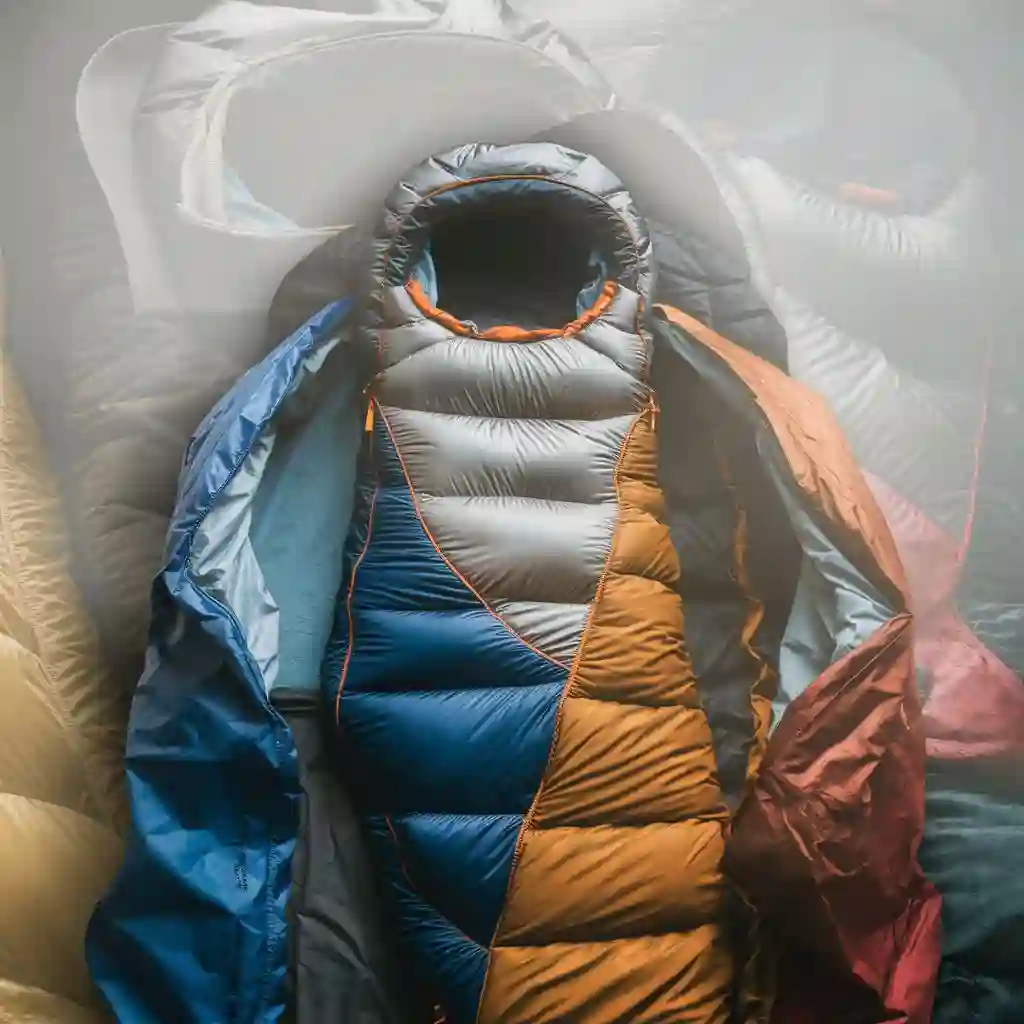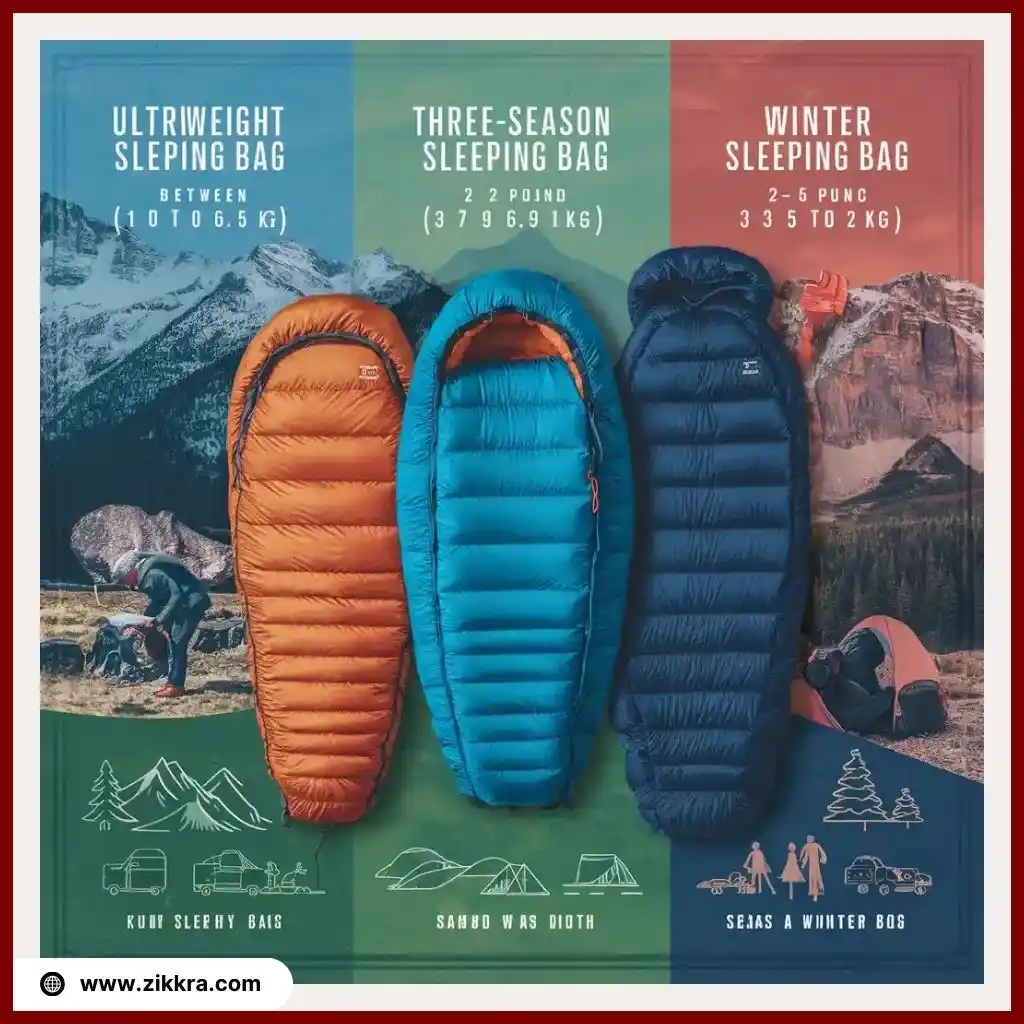How to Choose the Best Backpacking Sleeping Bag for Your Trip
Table of contents
When planning an outdoor adventure, having the best backpacking sleeping bag is essential for a comfortable and restful night under the stars. Whether you’re camping in the mountains or hiking through forests, the right sleeping bag can make a significant difference in your overall experience. In this guide, we’ll help you choose the perfect sleeping bag and answer common questions related to backpacking sleeping bags.

Why Do You Need a Good Backpacking Sleeping Bag?
A sleeping bag isn’t just a piece of camping gear; it is your best defense against cold temperatures, moisture, and discomfort during an outdoor trip. Here are a few reasons why a good sleeping bag is a must-have for backpacking:
- Temperature Regulation: A well-insulated sleeping bag keeps you warm in cold weather and allows proper ventilation in warmer conditions.
- Comfort: The right sleeping bag provides cushioning and support for a good night’s sleep.
- Protection from Moisture: Many modern sleeping bags come with water-resistant materials to prevent dampness.
- Lightweight & Portable: Backpacking requires carrying gear, and a lightweight sleeping bag helps reduce the burden.
Factors to Consider When Choosing a Backpacking Sleeping Bag
When selecting a sleeping bag for backpacking, consider the following factors:
1. Weight and Packability
Weight is a crucial factor for backpackers. Carrying a heavy sleeping bag over long distances can be exhausting. Ultralight sleeping bags (weighing between 1 to 2 pounds) are ideal for long treks. Additionally, the sleeping bag should be compressible so that it fits into a compact stuff sack.
2. Temperature Rating
Sleeping bags come with temperature ratings that indicate the lowest temperature they can handle while keeping you warm. The three main temperature ratings are:
- Summer Bags (35°F and above): Suitable for warm weather camping.
- Three-Season Bags (10°F to 35°F): Ideal for spring, summer, and fall backpacking.
- Winter Bags (Below 10°F): Designed for extremely cold conditions.

3. Insulation Type
Backpacking sleeping bags come with two main types of insulation:
- Down Insulation: Lightweight, compressible, and long-lasting. However, it loses insulation ability when wet.
- Synthetic Insulation: More affordable and retains warmth even when wet, but bulkier than down.
4. Shape and Design
Mummy Bags: Tapered design to conserve body heat and reduce weight.
Rectangular Bags: More spacious and comfortable but bulkier.
Semi-Rectangular Bags: A balance between mummy and rectangular styles.
Who Makes King Camp Sleeping Bags?
King Camp is a well-known brand that manufactures high-quality camping and outdoor gear, including sleeping bags. If you’re wondering who makes King Camp sleeping bags, they are designed and produced by KingCamp Outdoor Products, a company specializing in comfortable and durable camping gear. These sleeping bags are popular among backpackers for their affordability, reliability, and performance.
What Size Stuff Sack to Get for a Sleeping Bag?
A stuff sack is essential for compressing and storing your sleeping bag while backpacking. The answer to what size stuff sack to get for a sleeping bag depends on the bag’s insulation type and its original packed size. Most backpacking sleeping bags fit into a 10L to 20L stuff sack. For ultra-light models, a 5L to 8L stuff sack may be sufficient.
Tips for Storing Your Sleeping Bag in a Stuff Sack
- Compress it gradually to avoid damaging the insulation.
- Use a waterproof stuff sack to protect against moisture.
- Shake the bag out fully before packing to ensure even compression.
How Much Does a Sleeping Bag Weigh?
Weight is a crucial factor when choosing a backpacking sleeping bag. How much does a sleeping bag weigh? The weight varies based on insulation type and size:
Ultralight Sleeping Bags: 1 to 2 pounds (0.5 to 0.9 kg)
Three-Season Sleeping Bags: 2 to 3 pounds (0.9 to 1.4 kg)
Winter Sleeping Bags: 3 to 5 pounds (1.4 to 2.3 kg)
If you plan on carrying your sleeping bag for long distances, choosing a lightweight option can help reduce fatigue.
How Long Can You Leave a Sleeping Bag Compressed?
Sleeping bags are designed to be compressed for transport, but prolonged compression can damage insulation. How long can you leave a sleeping bag compressed? It’s best to avoid storing a sleeping bag in its stuff sack for extended periods. Ideally, store it in a loose, breathable storage bag when not in use to maintain its loft and insulation effectiveness.
Proper Sleeping Bag Storage Tips
- Always dry your sleeping bag before storing it.
- Store it loosely in a breathable cotton or mesh sack.
- Avoid keeping it in a compressed state for more than a few days.
Finding the Best Budget Backpacking Sleeping Bag
If you’re looking for a high-quality yet affordable sleeping bag, check out our guide on the best budget backpacking sleeping bag. Investing in a good sleeping bag doesn’t mean breaking the bank – there are excellent options available that provide warmth, comfort, and durability at a reasonable price.
Budget-Friendly Features to Look For
Synthetic insulation for affordability and wet-weather performance.
Three-season rating to cover most conditions.
Weight under 3 pounds to balance warmth and portability.
Frequently Asked Questions (FAQs)
1. What is the best temperature rating for a backpacking sleeping bag?
The ideal temperature rating depends on the season and location of your trip. A three-season sleeping bag (10°F to 35°F) is the most versatile option for most backpackers.
2. How do I choose between down and synthetic insulation for a sleeping bag?
Down insulation is lightweight and highly compressible, making it ideal for cold, dry conditions. Synthetic insulation is more affordable and performs better in wet conditions, retaining warmth even when damp.
3. How do I pack a sleeping bag to save space in my backpack?
Use a compression sack to reduce the sleeping bag’s size. Roll or stuff it tightly into the sack, removing excess air to maximize packability.
4. How do I prevent my sleeping bag from losing its insulation over time?
Avoid storing your sleeping bag compressed for long periods. Instead, keep it in a loose, breathable storage sack when not in use to maintain its loft and insulation properties.
5. What features should I look for in a high-quality backpacking sleeping bag?
Key features include a lightweight design, appropriate temperature rating, durable zippers, water-resistant shell, and a well-fitted hood for extra warmth in colder conditions.
